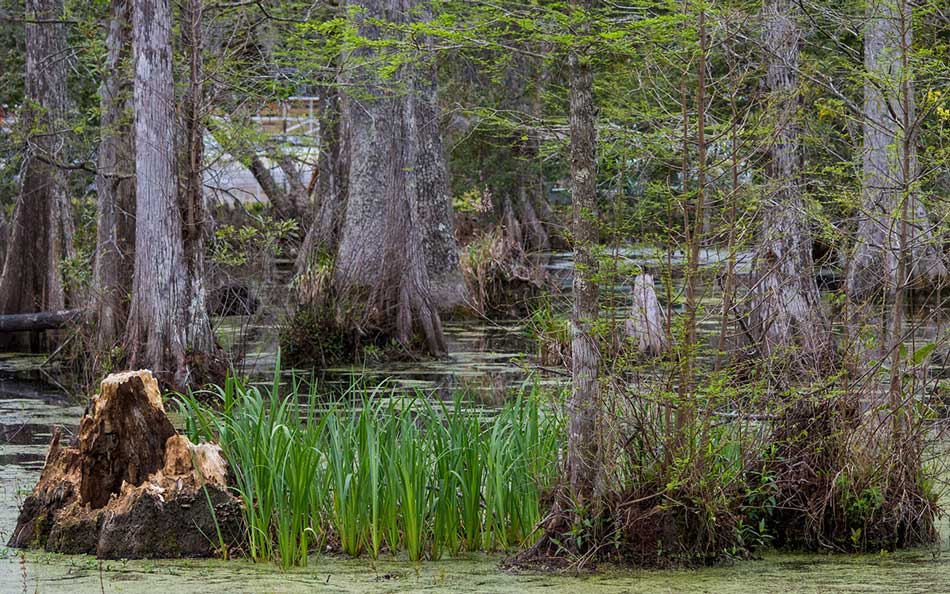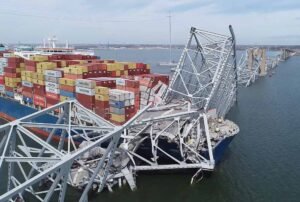
Community partnership is one of the most potent actions against climate change. Collaboration among community members, nonprofit organizations, academic institutions, and local governments allows resources to flow where they’re needed and is a powerful way to help address race and climate inequities. Such a partnership is mobilizing the community and addressing climate effects in Bucksport, a small coastal town in the Lowcountry region of South Carolina.
The Lowcountry’s Climate Vulnerability
Bucksport is a predominantly Black town whose descendants come from the Gullah Geechee people. The Gullah Geechee are descendants of enslaved African people from the rice-growing region of West Africa. Once brought to America, they settled along the Carolinas, Georgia, and Florida coastal areas, creating and retaining distinctive arts, music, and language traditions.
Bucksport sits near the Pee Dee and Waccamaw Rivers, about 28 miles southwest of the famous tourist destination Myrtle Beach. Alongside Bucksport’s rich history, the people there have experienced political disenfranchisement and underinvestment. The area is also vulnerable to climate impacts—particularly severe flooding. But American Rivers, a national organization addressing threats to rivers, is helping the community find nature-based solutions to mitigate flooding and push for space at decision-making tables.
“[There is a] conglomeration of issues that [has] made this community vulnerable to flooding and other issues related to health and housing,” said Dr. Janae Davis, Southeast conservation director at American Rivers, in an interview with NPQ.
In 2016, Hurricane Matthew was the most powerful storm of the Atlantic hurricane season, sweeping through the Caribbean and the Carolinas. Rivers rose, homes flooded, and the entire area was evacuated. Just two years later, Hurricane Florence brought historic flooding to Bucksport. Regions like South Carolina’s Lowcountry are particularly vulnerable to flooding and sea-level rise due to human-caused wetland drainage and hydrological changes.
Many Black families in Bucksport have lived on land passed down via inheritance for generations. However, when natural disasters hit, accessing federal aid was difficult because FEMA did not recognize heirs’ property as legal land ownership. The policy required formal documentation that many Black families living on ancestral property did not have. “Heirs’ property is a huge issue in many Black coastal communities as in South Carolina, [as most] property has been handed down without a title,” said Davis. In late 2021, FEMA finally changed that policy that had kept thousands of Black families from accessing aid.
A sustainability study led by students at Coastal Carolina University…developed metrics to understand several elements of sustainability, including water, housing, and another essential factor—political engagement.
Community Power
When Davis started as the associate director of Southeast conservation at American Rivers in 2019, she lived in Myrtle Beach and read frequently about flooding in Bucksport. She contacted the Association for the Betterment of Bucksport; the entity’s president at the time, Kevin Mishoe, revealed that American Rivers was the first national NGO ever to reach out and offer support. By 2021, the Association and American Rivers created the Bucksport Community Partnership, which sought to address these issues simultaneously and holistically. The partnership also included NGOs, and nearby academic institutions such as Clemson University, Coastal Carolina University, and Duke University. These entities had a mix of experts—hydrologists, ecologists, and economic developers—who could use their skills to support Bucksport’s goals and resilience.
One of the first things this partnership organized was a sustainability study led by students at Coastal Carolina University. Using the United Nations Sustainable Development Goals, the study developed metrics to understand several elements of sustainability, including water, housing, and another essential factor—political engagement. In 2022, Duke University graduate students published a community flood assessment that explored precipitation patterns and watershed issues and made relevant flood projections. The partnership also worked with Furman University to develop a cultural preservation project to help Horry County, where Bucksport is located, receive funding from the American Rescue Plan Act. Most recently, Bucksport received a grant from the National Fish and Wildlife Foundation to develop a flood analysis and restoration plan.
This flourishing partnership helped to change the dynamic between Bucksport residents and local government and can be a model for other places.
One ongoing nature-based project is installing rain gardens. A rain garden is a small, depressed area of land that collects excess rain and allows it to be soaked into the ground. It is a cost-effective way to reduce floodwater runoff and helps filter out pollutants from rainwater before it reaches waterways. In the interview with NPQ, Davis described the process of creating rain gardens at the James R. Frazier Community Center in Bucksport. With help from American Rivers and Clemson University Extension, community members identified the most promising area of the center’s property for two rain gardens to be installed and collaborated to plant culturally native plants. After several months of planning, the partnership held its first rain garden installation event in June 2022. Alongside the installation, community members learned to do soil sampling and remediation.
In March 2023, the partnership installed two more rain gardens with the help of the South Carolina Native Plant Society. The first was at a community member’s home that continually experienced flooding; the second was at the historic Grace Chapel Church.
The eventual goal is a broader restoration project to fully support the landscape, better absorb flood waters, and preserve cultural resources. Davis and her colleague Cheryl Cail, American Rivers’ associate director of Southeast conservation, envision these restoration projects as an economic driver to bring back youth and jobs to the community.
This flourishing partnership helped to change the dynamic between Bucksport residents and local government and can be a model for other places. “What it really takes is bringing people to the table that can help on projects,” said Cail. She sees American Rivers as an intermediary and an influencer to help communities like Bucksport get their voices heard and desires fulfilled, and they are successful because they deliver on what people need in order to participate. The movement has seen a critical shift to compensate environmental justice communities—communities disproportionately impacted by climate change—for their time working on projects, and provide other support, such as childcare, to make civic engagement easier.
Sign up for our free newsletters
Subscribe to NPQ's newsletters to have our top stories delivered directly to your inbox.
By signing up, you agree to our privacy policy and terms of use, and to receive messages from NPQ and our partners.
Growing the Movement
A large part of American Rivers’ work is developing river protection policies, advancing solutions to reduce flood risks, and working to remove unnecessary dams throughout the country. Lessening the impacts of flooding on communities like Bucksport requires strengthening opportunities for greening and climate resilience. With the passage of the Bipartisan Infrastructure Deal, the creation of the Clean Water State Revolving Fund has opened an opportunity for local governments and communities to access resources to build climate-resilient projects. Projects can be funded at all levels, from landscape scale (which requires little to no engineering) like wetland and forest restoration, to more intricate projects, such as artificial groundwater recharge and living shorelines.
The work of the organization comes at a crucial time as this past June the Supreme Court voted to backtrack federal wetlands protections in the Sackett v. Environmental Protection Agency case. The ruling also dramatically narrows the scope of the Clean Water Act, which has protected the nation’s waterways for decades. Wetlands connect rivers, streams, and other kinds of land and bodies of water, and they play a critical role in the environment. The Sackett case led the Biden administration to lift protections so that waterways essentially have no federal governmental pollution controls. With no federal protections, there is no legal incentive to mitigate harm.
Earthjustice, an environmental law firm, estimates that close to 118 million acres of wetlands now have no federal oversight. This leaves states to determine their own version of protections, and it is likely that environmental justice groups will have to push to get their own legal protections in place.
Despite these setbacks, American Rivers is looking to the future, and ready for more opportunities to partner with communities to help them protect their waterways from harm.
“We’re idealists,” said Cail. “We create ideas for the protection of both our communities and rivers—and we do that based on science.”












